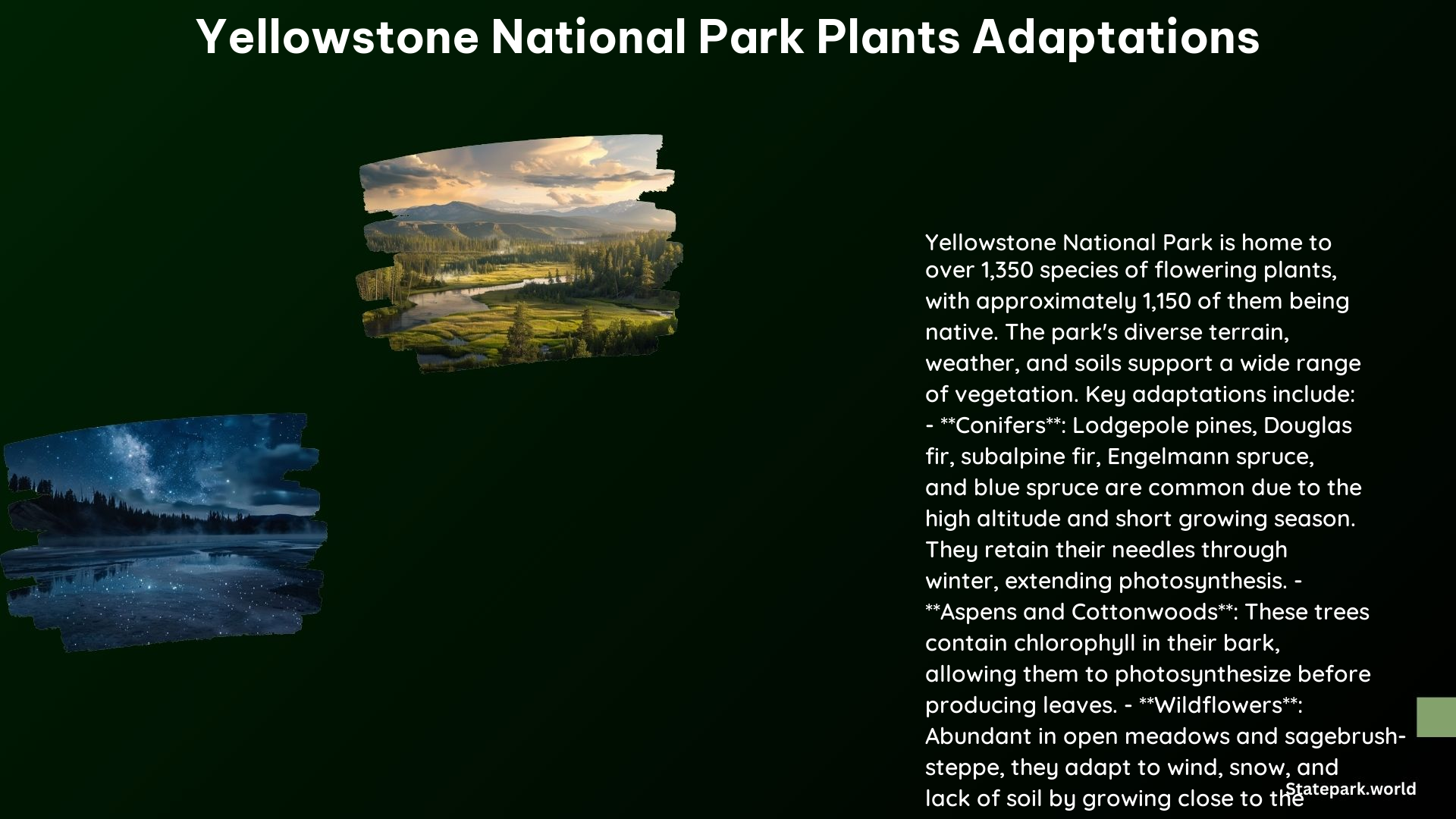Yellowstone National Park is home to a diverse array of plant species that have adapted to the park’s unique thermal features and harsh climate. From thermophilic plants thriving in hydrothermal areas to coniferous trees and alpine plants, the park’s flora has evolved to survive the challenging conditions.
Diverse Plant Life in Yellowstone
Yellowstone National Park is a botanical wonderland, boasting an impressive array of plant species. The park is home to:
- 1,350 species of flowering plants, with around 1,150 being native to the park.
- Coniferous forests, with lodgepole pines covering approximately 80% of the area.
- Hundreds of types of wildflowers that thrive in various habitats, including open meadows and sagebrush-steppe areas.
Adaptations to Thermal Features

Yellowstone’s unique hydrothermal features, such as the Norris Geyser Basin and Mammoth Hot Springs, have given rise to a unique set of plant adaptations:
- Thermophilic plants: Some plants have adapted to the extreme conditions found in the park’s thermal areas, where thermophilic archaea and prokaryotes thrive.
- Endemic species: Three plant species, including Ross’s bentgrass, Yellowstone sulphur flower, and warm springs spike rush, are found only in Yellowstone and depend on the park’s thermal features.
Adaptations to Climate
Yellowstone’s high altitude and short growing season have led to the evolution of various plant adaptations:
- Coniferous trees: Conifers like lodgepole pines, Douglas fir, and Engelmann spruce are well-suited to the harsh conditions, retaining their needles through the winter to extend photosynthesis.
- Deciduous trees: Trees like aspen and cottonwood contain chlorophyll in their bark, allowing them to photosynthesize before producing leaves.
- Alpine plants: Plants in the alpine zone have adapted to wind, snow, and lack of soil by growing close to the ground and flowering soon after snowmelt.
Rare and Endemic Species
Yellowstone is home to several rare and endemic plant species that have adapted to the park’s unique environment:
- Ross’s bentgrass: Found only in the geyser basins in the Firehole River drainage and at Shoshone Geyser Basin.
- Yellowstone sulphur flower: Only found in the Firehole River drainage.
- Warm springs spike rush: Grows in warm water.
Conservation Efforts
Yellowstone National Park’s managers are dedicated to preserving the park’s native plant communities and restoring vegetation:
- Vegetation management: Park managers focus on minimizing human-caused impacts on native plant communities and restoring native vegetation.
- Herbarium: The park’s herbarium documents the presence of plants over time and the history of plant collecting.
Visiting Yellowstone for Plant Enthusiasts
For plant enthusiasts, the best time to visit Yellowstone is during the spring and summer when wildflowers are in bloom. Visitors can use guides like Kurt F. Johnson’s “A Field Guide to Yellowstone and Grand Teton National Parks” to identify the diverse plant life found throughout the park.
References:
1. Britannica – Yellowstone National Park: Plant and Animal Life
2. Frommers – A Nature Guide: The Flora
3. National Park Service – Winter Ecology
4. National Park Service – Plants
5. Yellowstone National Park Lodges – Infographic: Spot These Plants and Animals in Yellowstone National Park
